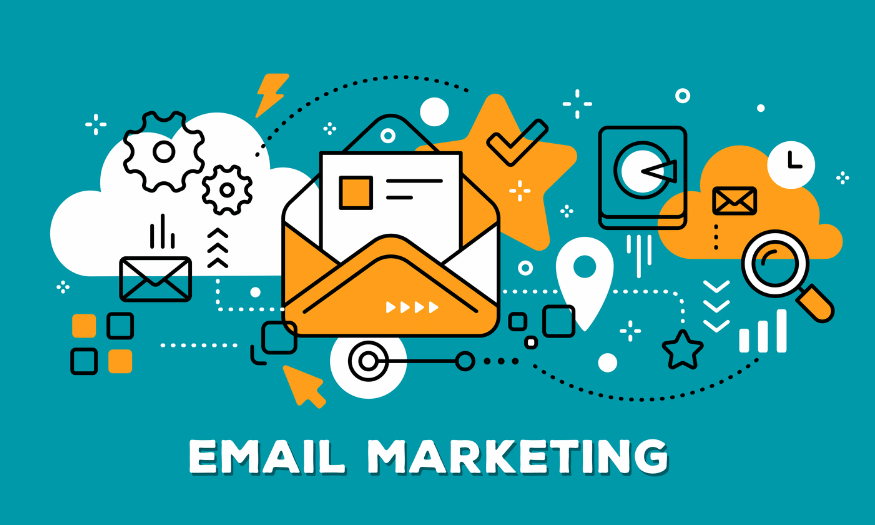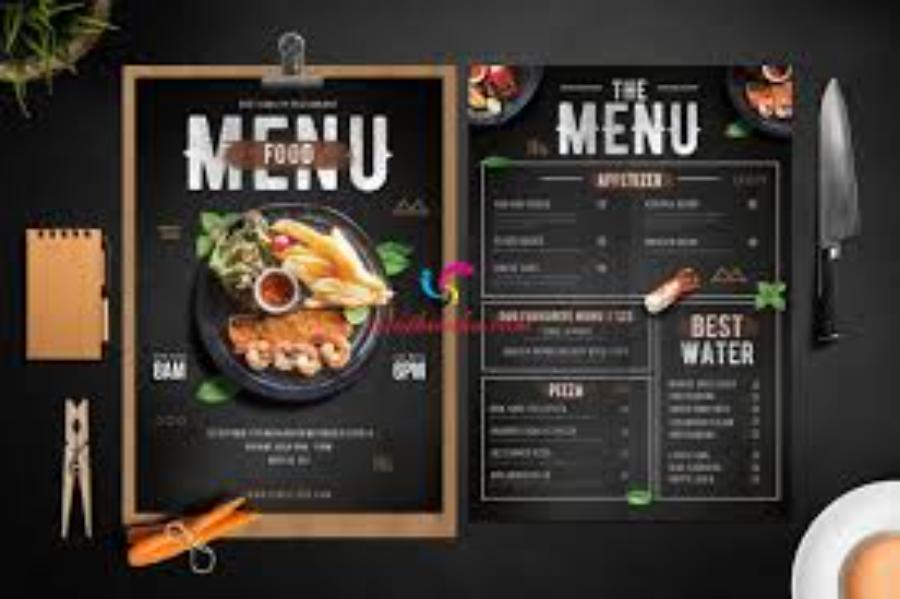Best Selling Products
Using Email in Google Workspace for Effective Marketing
Nội dung
- 1. Hyper-personalization through AI and machine learning
- 2. Advanced automation and predictive analytics
- 3. Integrate with multi-channel marketing
- 4. Focus on privacy and data security
- 5. Interactive and immersive email experiences
- 6. Accessibility matters
- 7. Sustainable Email Marketing
- 8. Advanced Analytics and Reporting
- 9. AI-Generated Content
- 10. Focus more on customer experience
- 11. Email design
- 12. Integrating AI in customer behavior analysis
- 13. The Rise of Video in Email
- 14. Optimize for mobile
- 15. The rise of secure and authenticated email
- 16. Conclusion
In today's digital age, email still plays an important role in the marketing strategy of businesses. Using email not only helps businesses reach customers effectively but also creates sustainable and trustworthy relationships. The Google Workspace toolkit, with its convenient features, provides marketers with powerful tools to optimize the use of email in their marketing strategy. Below, we will explore how to use email in Google Workspace to achieve the highest marketing efficiency.

In today's digital age, email still plays an important role in the marketing strategy of businesses. Using email not only helps businesses reach customers effectively but also creates sustainable and trustworthy relationships. The Google Workspace toolkit, with its convenient features, provides marketers with powerful tools to optimize the use of email in their marketing strategy. Below, we will explore how to use email in Google Workspace to achieve the highest marketing efficiency.
1. Hyper-personalization through AI and machine learning
Personalization has been a major trend in email marketing for years, but with the advent of artificial intelligence (AI) and machine learning (ML), the concept is being taken to the next level. AI and ML allow marketers to not only analyze massive amounts of data, but also gain a deeper understanding of each customer’s behavior and preferences. This means that each email campaign can be optimized to be tailored to each individual, meeting their specific needs and desires.
In the near future, personalization will go beyond sending emails tailored to purchase history. In fact, email content can be generated in real time, adjusting as the recipient opens the email. This can include personalized product recommendations, customized content, and even unique subject lines, all based on the recipient’s previous interactions. When done right, this will not only increase email open rates, but also create customer satisfaction and loyalty.
2. Advanced automation and predictive analytics
Automation has had a huge impact on how email marketing works, reducing the amount of repetitive work for marketers. However, in the future, we will see an evolution of automation, driven by predictive analytics. These technologies will enable us to predict customer behavior based on their interaction history, thereby optimizing campaigns more effectively.
For example, marketers can predict which products customers are most likely to be interested in and when to send emails. By integrating these analytics into their automation processes, they can deliver timely, targeted messages that increase conversion rates and reduce the likelihood of customers unsubscribing. This is a huge step forward in optimizing the cost and time of effective marketing campaigns.
.png)
3. Integrate with multi-channel marketing
The future of email marketing is inseparable from an omnichannel marketing strategy. Consumers today interact with brands across multiple channels — from social media to websites, mobile apps, and in-store experiences. Integrating email marketing with these channels not only creates a seamless customer experience, but also reinforces a consistent marketing message.
Imagine a customer selecting a product on your website, immediately receiving a personalized email with relevant recommendations, and then seeing social media ads for those products. This approach not only guides the customer through their journey, but also increases the likelihood of conversions, thanks to the consistency of the brand’s messaging and experience.
4. Focus on privacy and data security
With growing concerns about data privacy and stringent regulations like the General Data Protection Regulation (GDPR) and the California Consumer Privacy Act (CCPA), the future of email marketing will be heavily focused on data privacy and security. Marketers will have to be transparent about how they collect, store, and use customer data.
Obtaining explicit consent from subscribers and providing opt-out options will become more important than ever. Investing in robust security measures to protect customer data from breaches will also become a top priority. Brands that prioritize privacy and data security will build trust with customers, which is key to maintaining a positive brand image and fostering long-term relationships.
.png)
5. Interactive and immersive email experiences
As technology continues to evolve, interactive and immersive email experiences are becoming a prominent trend in email marketing. Recipients are no longer just readers, they can interact directly with the content in the email without having to leave their inbox. This not only saves users time but also creates a more interesting and engaging experience.
Interactive features like image carousels, product sliders, quizzes, and polls are becoming more common. Even the ability to purchase directly from emails is on the rise. These elements not only delight users, but also increase engagement rates, helping marketers connect more deeply with customers. When recipients feel involved in the experience, it builds engagement and brand loyalty.
6. Accessibility matters
Accessibility in email marketing is becoming an indispensable element in building effective campaigns. With the increasing awareness of the rights of people with disabilities, ensuring that email content is accessible to all recipients is not only a legal obligation but also a moral responsibility of businesses.
Future email campaigns will need to focus on using alt text for images, organizing information logically, and choosing a color palette that is color-blind. This not only expands the audience, but also demonstrates a brand’s commitment to all consumers. When accessibility is a priority, businesses create a welcoming and inclusive environment, which in turn increases brand value in the eyes of customers.
.png)
7. Sustainable Email Marketing
In an era where sustainability is becoming a major concern for consumers, email marketing is no exception. Consumers today are increasingly concerned about sustainability and environmental values, and this has prompted businesses to change their approach to marketing strategies.
To meet this need, marketers need to optimize email design to reduce data load, encourage digital alternatives to physical products such as e-receipts and e-wallets. Furthermore, promoting eco-friendly products and initiatives in email content will not only attract customers’ attention but also show the brand’s efforts to contribute to global sustainability. This will help the brand make a good impression with environmentally conscious consumers.
8. Advanced Analytics and Reporting
The future of email marketing will see a huge increase in analytics and reporting capabilities. Marketers will have access to more detailed and in-depth data about their campaign performance. This will help them better understand recipient behavior and optimize their campaigns effectively.
Metrics such as open rates, click-through rates, customer lifetime value, and engagement over time will become critical to measuring campaign success. Not only will this information help marketers target more accurately, it will also allow them to better understand ROI (return on investment). With greater insight into the performance of their campaigns, marketers will be able to make better decisions, optimize resources, and improve marketing effectiveness.
.png)
9. AI-Generated Content
As artificial intelligence continues to advance, we are approaching a new era in email marketing where AI-generated email content will become more prevalent than ever. AI has the ability to analyze large data sets to identify the types of content that will resonate with different audience segments. From writing compelling subject lines, crafting email content to creating personalized product recommendations, AI can do it all quickly and efficiently.
However, while AI can automate many aspects of content creation, human intervention is still necessary to ensure quality and consistency with brand voice. A combination of AI-generated content and human editing can be most effective for businesses. With this capability, marketers can save time while ensuring that their message to customers remains consistent and engaging.
10. Focus more on customer experience
A prominent trend in the future of email marketing is the increased focus on the overall customer experience. Instead of just focusing on delivering promotional messages, email campaigns will focus on providing real value to recipients. This means that brands will need to build long-term relationships with customers through practical and useful content.
Sending educational content, product tips, and personalized recommendations will not only make your customers feel cared for, but will also increase brand loyalty. When customers feel like they’re getting value from your email campaigns, they’re more likely to come back and engage with you again. This is key to creating meaningful, lasting connections between your brand and your customers.
.png)
11. Email design
Email design plays a vital role in capturing the attention of recipients and creating a positive first impression. Future marketing emails will need to be well-designed, with attractive and user-friendly layouts. This may include the use of more images and augmented reality (AR) elements to increase engagement and keep readers entertained.
However, while creativity is important, simplicity and clarity will continue to be key to the success of an email campaign. Emails that are easy to read and navigate, especially on mobile devices, will continue to appeal to consumers. Brands will need to find a balance between creativity and usability to create quality email designs that are effective in engaging customers.
12. Integrating AI in customer behavior analysis
The development of artificial intelligence goes beyond content creation and opens up new opportunities for customer behavior analysis. By using AI, marketers can track and analyze recipient behavior more deeply and accurately than ever before. AI has the ability to recognize behavioral patterns, thereby helping brands better understand customer needs and preferences.
With this information, marketers can tailor their email campaigns in the most optimal way. For example, AI can help predict when customers are most likely to open emails, or identify the types of content they engage with. This can help improve open and click-through rates, while creating a more personalized experience for recipients.
.png)
13. The Rise of Video in Email
Video is becoming an increasingly important part of email marketing strategies. With the ability to convey messages in a more vivid and engaging way, video can capture the attention of the recipient at first sight. In the future, integrating video into emails will not only enhance the user experience but also increase the ability to interact.
Marketers can use videos to showcase products, provide tutorials, or even tell a brand story. When recipients can watch a video right in the email without having to navigate to another page, it creates convenience and engagement. However, it is important to note that video size should be optimized to avoid slowing down email loading speeds, which can impact user experience.
14. Optimize for mobile
With the rise of mobile phone usage for checking emails, mobile optimization has become an essential element of any email marketing campaign. Email design needs to be flexible and adaptable to different screen sizes, ensuring that recipients can easily read and interact with email content on any device.
Marketers should focus on using large fonts, high-quality images, and clear layouts to ensure that emails remain attractive and easy to read on small screens. When the mobile user experience is optimized, businesses have a better chance of attracting and retaining customers.
15. The rise of secure and authenticated email
With the growing threat of cybercrime, ensuring email marketing security will become a top priority. Brands will need to implement robust security measures to protect customer data and prevent cyberattacks. This will not only provide peace of mind to recipients but also protect the brand’s reputation.
Using authentication technologies like DKIM (DomainKeys Identified Mail) and SPF (Sender Policy Framework) will help increase email trust. Not only that, marketers also need to be transparent about how they use customer data, including providing clear opt-out and opt-in options. In this way, they not only ensure customer safety but also build long-term trust with consumers.
16. Conclusion
Email marketing is one of the most powerful tools in your business’s marketing toolkit. Using Google Workspace not only helps you optimize your workflow, but also increases the effectiveness of your email marketing campaigns. By implementing the right strategies and taking full advantage of the features of Gmail and other apps in Google Workspace, you can increase your customer reach and create lasting relationships.












































